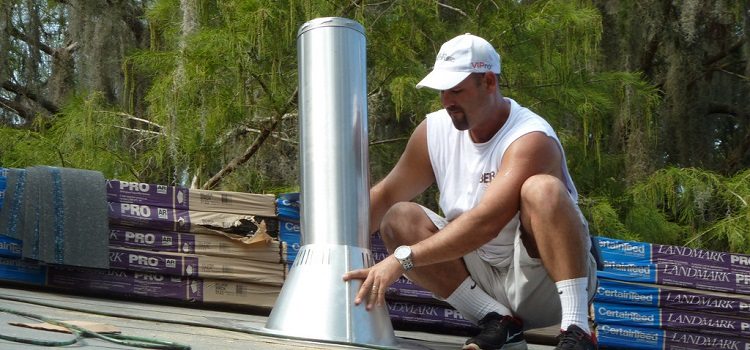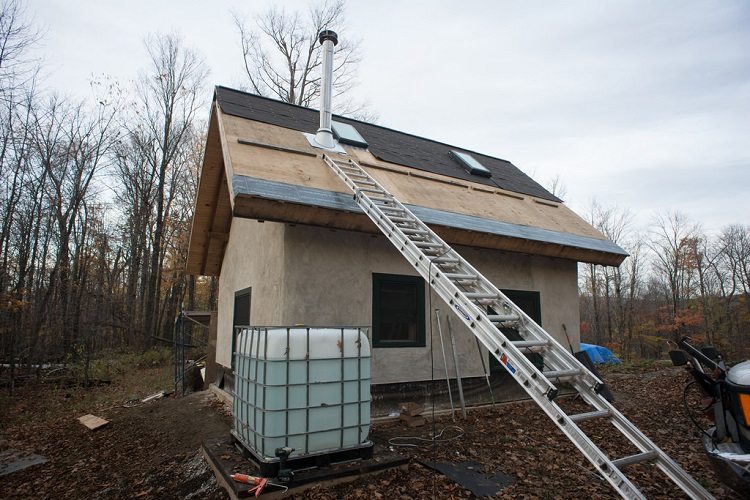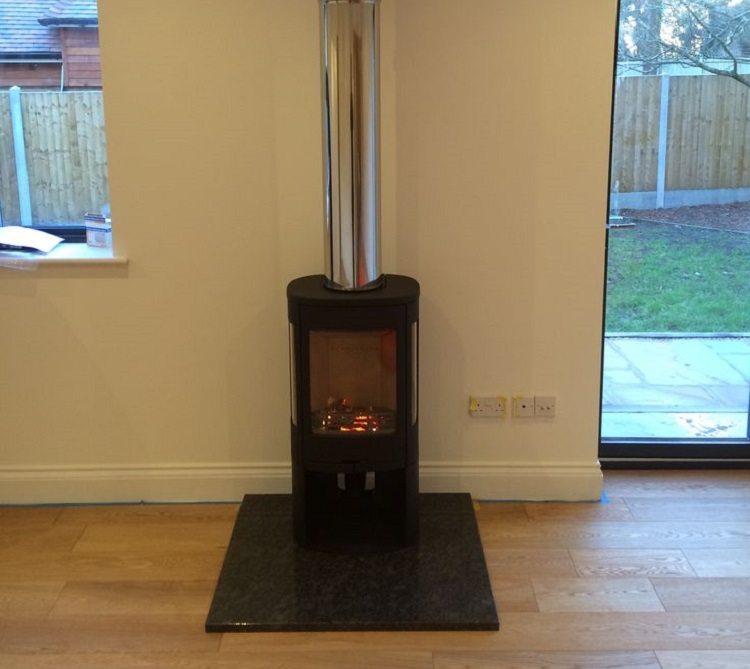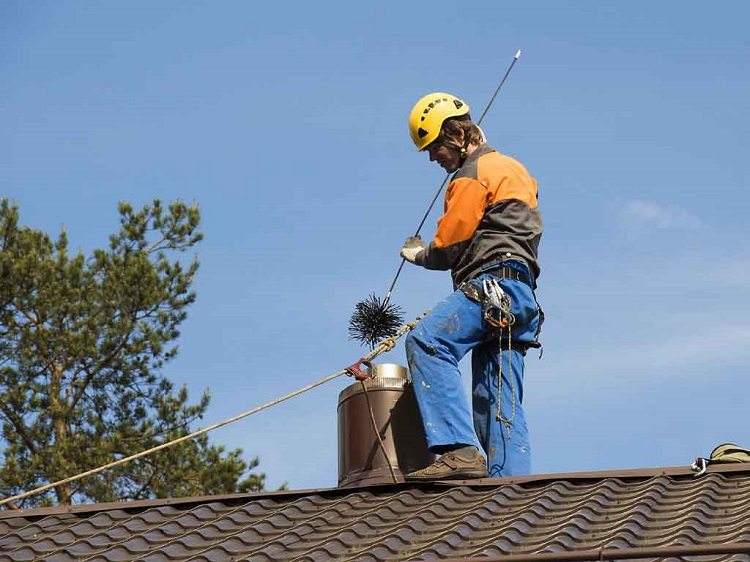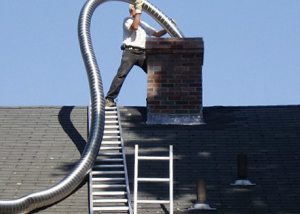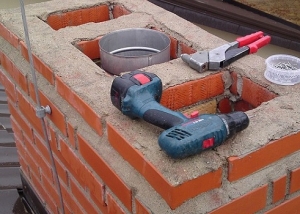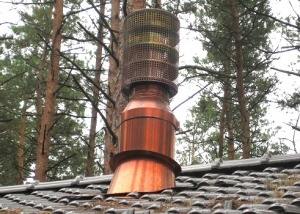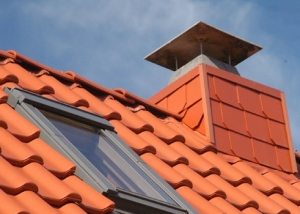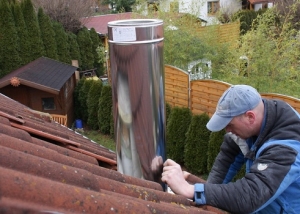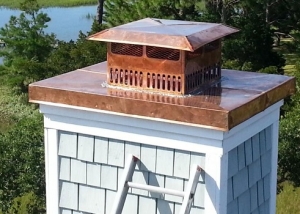The construction and construction of chimney systems is a much more complicated operation than it might seem. Unlike water or gas pipelines, chimneys are not just for transporting media. The efficiency and safety of all connected heat sources depends on the correctness of their design. Therefore the question DIY smoke duct installation remains relevant for most owners of suburban cottages, houses and plots.
Content
- 1 DIY chimneys for a stainless steel boiler
- 2 Rules for making calculations when installing a chimney with your own hands
- 3 DIY chimney installation for a stainless steel boiler
- 4 Installation of stainless steel chimneys: rules and tips
- 5 Problems associated with chimneys from stainless steel, their solutions
DIY chimneys for a stainless steel boiler
The first thing that starts the installation of any smoke exhaust system is its competent design. Calculation of the chimney will help to greatly simplify the installation yourself and avoid gross errors.
At the heart of any chimney channel is a simple cylindrical pipe, in this case, stainless steel. It is the circular section of the sleeve that makes the rise of hot air up the spiral optimal. The installation of a smoke channel from a cylindrical pipe itself may have nuances. The chimney exists in two variations:
- Direct-flow. A type of chimney that is very easy to do with your own hands. It goes straight up vertically from the heating source and protrudes through the floors of the floors and roof. The disadvantage of such a system is obvious - the condensate formed on the walls will drain down and fall into the combustion chamber of the boiler or furnace. Condensation always forms, regardless of whether there is thermal insulation or not. The difference will be only in its quantity.
- Swivel. The inclusion of rotary elements in the system is a more efficient method of manufacturing chimneys. The main smoke exhaust pipe can go outside both through the external walls of the building and through the roof, as in the first case. The boiler is connected to the flue through a pipe and a swivel segment with an angle of 90 degrees. A condensate collector is installed at the base of the main vertical section. In the presence of this element, condensate will not enter the heat source, but will drain into a DIY container. Alternatively, liquid from a condensate collector may enter directly into the sewer pipe and be discharged outside the house.
Rules for making calculations when installing a chimney with your own hands
Correct installation and design of the chimney also includes such moments as creating optimal conditions for adjusting the draft and thermal expansion.
To adjust the draft, a special damper (gate) is used, due to which the smoke channel can completely overlap or its clearance can be reduced. Overlap of the smoke channel is necessary when the boiler is turned off, but the heat should not leave the room. Partial blocking of the channel helps control the rate of fuel combustion in the furnace. With a decrease in draft, oxygen is also limited, and combustion slows down.
As for thermal expansion, it should be remembered that all chimneys made of metal have this property. Like any metal product, stainless steel pipes expand when exposed to significant heat. Therefore, it is desirable to install expansion joints for such structures.
Important! The compensator is a movable connection, due to which there is space for increasing the pipe area due to expansion.
Also, for the correct installation, the issue of the diameter and grade of the stainless steel pipe is important. The diameter of the desired product can be calculated independently, but recommendations from the technical passport offered to the buyer along with the boiler or stove will be more accurate information.
The approximate diameter of the chimneys is calculated based on the dimensions of the fuel combustion chamber. The larger the chamber, the greater the amount of fuel required for combustion. Accordingly, the gas output will be more significant. For devices with an open firebox and a round chimney made of stainless steel, a proportion of 1:10 is taken. If the dimensions of the combustion chamber are 500x400 mm, then the most correct diameter of the chimney is 180 mm.
Now about the material: starting the manufacture of a smoke channel with your own hands, you should not try to make a cylindrical pipe from a sheet of ordinary stainless steel food. For operation at high temperatures, only heat-resistant stainless steel is suitable, the alloy of which will include such additional elements as chromium, molybdenum and nickel. They give the metal high resistance to corrosion, ductility and reduce the risk of burnout. Of the grades available on the market, stainless steels of the AISI 310 S, AISI 316 L, AISI 304 and AISI 321 class will be the best choice.
DIY chimney installation for a stainless steel boiler
So, having a stainless steel sheet of heat-resistant class, sufficient for the manufacture of an optimal size chimney, you can begin to twist the pipe. The procedure will take place in several stages:
- Sheet steel is twisted into a long cylinder using a special device - rollers. It is better if the pipe is twisted in several layers. The seam is riveted to hold the shape. Rivets should be made of the same metal grade as the main pipe, otherwise they will simply fall off when heated.
- To improve the characteristics of the smoke channel, you can use mounting clamps. They must also be heat resistant. The disadvantage of this bonding method is the gap that somehow remains between the sheets. It can be filled with a sealing mixture, but this does not guarantee the durability of the connection.
- The most acceptable option is welding the seam. For stainless steel, welding electrodes or argon welding will be required.
Important! Making a chimney with your own hands makes installation somewhat more difficult, since there will be no bell on a rolled channel from a stainless steel. Use reduction adapters to seal parts.
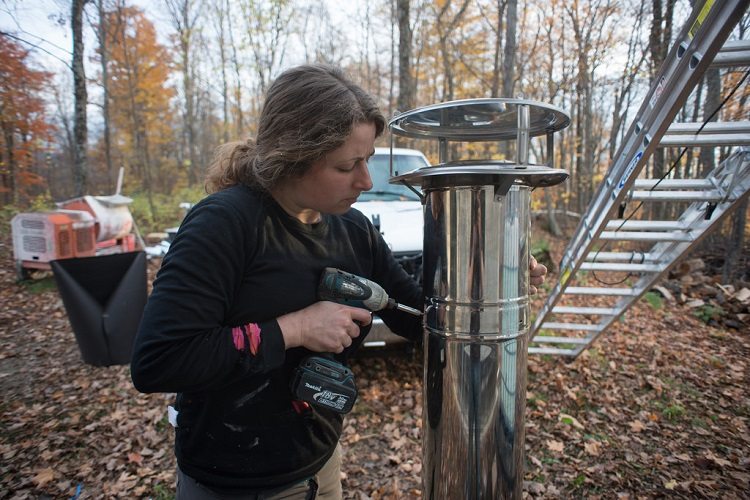
When collecting the chimney, you need to pay maximum attention to the reliability of the connection of its parts
The finished chimney pipe is wrapped with basalt cotton wool before installation. The insulation is fastened with a metal wire. A pipe of a larger diameter is put on top to obtain the so-called design "sandwich". The outer pipe may be made of steel of not as high quality as the inner.
Installation of stainless steel chimneys: rules and tips
The basic rules regarding the installation of stainless steel chimneys will be as follows:
- Boiler chimney must contain a minimum number of horizontal sections (total length - not more than 1 meter) and branch knees.
- Installation of a chimney made of stainless steel sheet implies the presence of heat-resistant surfaces with which the channel is in contact: walls, ceilings.Mounting to the walls is carried out with brackets with a gap of 1.5 meters.
- In order to reduce condensate, the chimney is sometimes made gradually expanding upward.
- Do not forget to install the revision - openings with a damper that allows timely maintenance and cleaning of the channel.
- The upper end of the pipe, towering above the ridge of the roofs, is covered protective cap. The installation of a spark arrestor is welcome.
Problems associated with chimneys from stainless steel, their solutions
Despite the high performance of the smoke exhaust channels made of stainless steel, their owners still sometimes face certain difficulties in the operation of the system. We will consider the most common malfunctions of steel chimneys, their causes and possible repair methods:
1. Burnout of the channel walls.
Causes: the chimney sleeve was made of low quality steel, or this class has a too low percentage of chromium, which is not suitable for high-temperature conditions. The burnout problem is also characteristic of corrugated steel chimneys and aluminum channels. Perhaps there have been gross violations in the installation of the design or operation of the heater.
Decision: installation of a new system or partial replacement of the old is required. If you encounter a problem of burning through the walls, do not try to repair the channel with your own hands. A thorough check of all components of the equipment is necessary, therefore, it is best in this case to seek help from the appropriate services.
2. The accumulation of resinous and soot formations on the inner surfaces of the walls in a short time.
Causes: poor thermal insulation installation, errors in the use of heating equipment. If a solid fuel boiler is installed, you may be using too tarry types of firewood.
Important! The danger of soot accumulations on the walls of the gas outlet is that their temperature is much higher than the temperature of the exhaust gases, it can exceed 1200 degrees. This is enough to quickly destroy the walls of the channel and fire.
Decision: it is necessary to conduct an audit and cleaning of the internal surfaces of the chimney. The insulation is also checked for integrity, and a new layer is installed if necessary.
3. Violation of the tightness or thermal insulation of the chimney.
Causes: during the operation of steel chimneys, the problem of smoke in the room arises, as a rule, due to burning of the walls. Again, the reason is the use of low-quality material or errors in the installation of the system. In the case of brick chimneys, such a violation appears with improper masonry.
Decision: complete diagnosis of the smoke exhaust system is required. If a leakage failure occurs due to a violation of the integrity of the pipe, it must be replaced. If malfunctions are found in the thermal insulation layer, it also needs to be replaced with a more fireproof one.
4. Condensation accumulates in the chimney in large quantities.
Cause: intensive condensation occurs due to the lack of sufficient thermal insulation or excessively low temperature of the exhaust gases (below the dew point level). Design errors in the construction of the gas duct are also possible.
Decision: make sure there is a condensate drain in the system and properly insulate the structure.
5. Insufficient traction when turning on heating equipment.
Cause: small chimney height above the roof, its illiteracy relative to the ridge, ledges on the roof and other buildings.
Decision: the question is solved only by changing the design features of the chimney. You may need to transfer the exit of the pipe through the roof.
We tried to highlight the most serious issues regarding the installation of a stainless steel chimney.The design and installation of a heating system in the house and the removal of combustion products with one's own hands is a fairly serious event, which must be treated professionally. Without a lack of experience and good theoretical knowledge, it’s not worth undertaking installation yourself. Such savings can be critical for both you and your loved ones.
